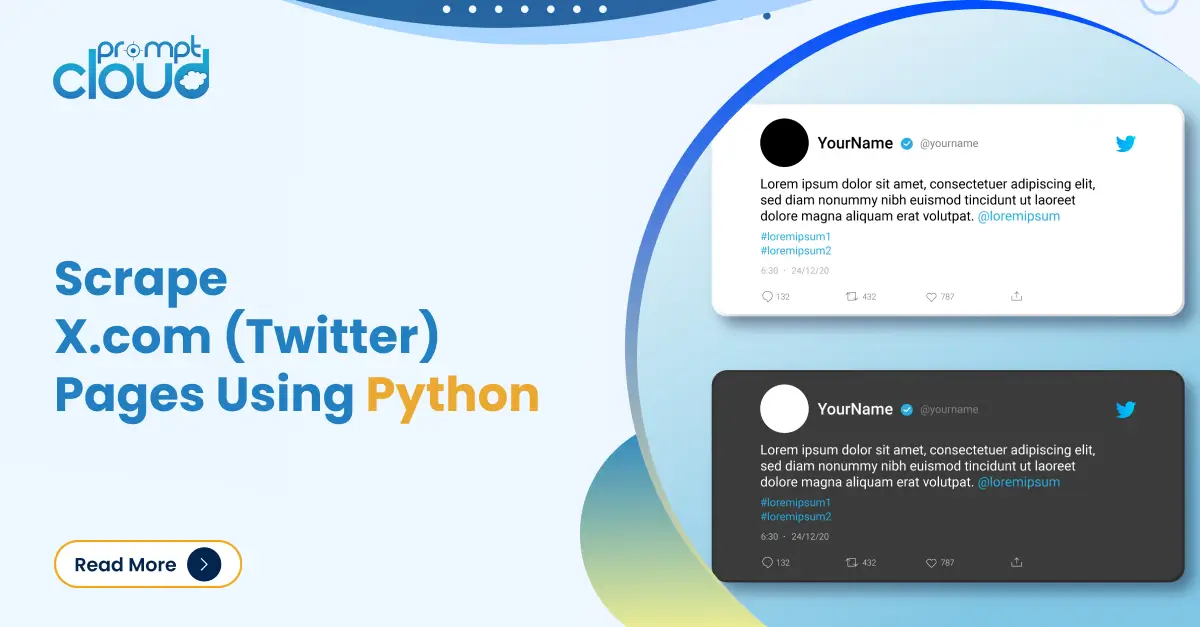
Scraping data from the web without having a plan in hand is fraught with risks. As you get lost in complex websites and data cleanliness, your budget will get overrun quickly. The chances are even higher if you are using cloud resources and are not tracking the costs incurred daily. In terms of cost optimisation, you will have to look at your entire workflow, typically including–
- Scraping data from the web.
- Cleaning and normalization of data.
- Storing the data in a medium like a database or an S3 bucket.
- Accessing the data via API calls or direct access to the storage location.
- Possible encryption and decryption of data (in case the data is sensitive and high security is paramount).
- Processing of the scraped data to make it usable for downstream workflows.
Resuming > Restarting
In many cases when you are scraping tens of data points across millions of web pages, your code may break at some point. In most scenarios, people go ahead with restarting the whole task- yes that is indeed much easier to implement and use. However with a little bit of engineering marvel, possibly using a caching mechanism, you can ensure that you save the checkpoint whenever a scraping job breaks. Once you have fixed the issue behind your breakage, you can go on to scrape the data by resuming from the saved checkpoint.
Server vs Serverless
This point is important for those who are not scraping data in real-time, but instead, in batches. For instance, suppose you scrape data from a million web pages twice a day. Each time, the scraping job takes 2 hours to complete. So the total time taken for the task to run daily is 2+2=4 hours. Now if you have a server-based setup using something like an AWS EC-2 instance, you will be billed for 24 hours unless you manually go and turn the instance on and off every single time- an arduous and easy-to-mess-up process. The better path to take here will be to use a serverless setup where you have cloud resources running on-demand such as AWS Lambda or Fargate. This way, you are billed only for the 4 hours you consume and will save you tons of money in the long run. In case you are scraping data from the web using automated spiders which run 24×7, you can choose the server-based setup.
Website Change Detector
You may be scraping a million web pages from 5 websites- 5 million web-page scrapes in total. Now suppose 2 of those websites make UI-based changes and when you run your crawler, you get the wrong data in your workflow. Now you will need to spend both man-hours as well as extra computing resources to find what part of the data is unusable, update the crawler and then run it again for 2 million webpages. Such a situation could have been easily avoided had you run a change detector script which would have told you that the look and feel of 2 of the websites have changed. This would save you time, money and even probable data loss.
Automating human tasks
When creating a web-scraping workflow there will be numerous tasks that are initially performed manually. These may include stages like data verification and validation, data cleanup, formatting and more. Often data analysts spend hours and days running scripts on their local machines. Given the large quantity of data that they might be handling, the scripts may also take a while to run. The better option here is to automate some of the steps after getting the pulse of the data. With time, you should target to automate more tasks to increase efficiency.
Choose a public cloud instead of dedicated servers
Unless you are making decisions using a data stream where every millisecond counts, you can afford to use a public cloud instead of dedicated servers. There may be a slight degradation in performance but using dedicated servers in the long run, may make your web scraping costs balloon sans any limit.
Open Source Tool
Most licensed software cost a bomb through monthly or yearly subscriptions. In case you need extra features like IP rotation or data cleaning, you can be charged extra. Also, most of these paid tools will come with some limitations and any new feature addition or changes may take months- if approved.
Outsource Compliance Issues
When scraping data from all over the web, you would need to look at multiple legal aspects such as
- Whether you are capturing any personal information.
- The robot.txt file for that website.
- The rules surrounding data sitting behind a login page.
- Handling copyrighted content.
- Ensuring content reuse doesn’t violate laws.
- Being aware of the laws of the geographical location you scrape your content from and where your end users reside.
And more…
Due to the complexity of global digital laws, it is easy to find oneself at the wrong end of a lawsuit due to one misstep. On the other hand, not every company would have a legal team to take care of such issues- it will be expensive.
You could instead outsource your legal requirements so that you can take their help whenever you are setting up a new web scraping flow or deciding on creating a product using scraped data. On-demand legal services for web scraping would make more sense for small or mid-level companies whereas the Fortune 500’s legal departments can handle such problems internally.
Make Data Validation cheaper using Machines
One switch that companies can make is to use third-party libraries to validate the data instead of getting data specialists. Often tens of analysts analyse the raw data manually, make certain changes, generate new columns, and normalize the data. Most of these activities can be automated by creating workflows using tools like AWS Step Functions. These workflows can be configured based on:
- Whether your data comes in the form of a live stream or batches.
- The quantity of the data that is processed periodically.
- The type of processing you want to do on the data.
- The acceptable time that a data point can take to traverse the workflow.
- The need for retry, rollback and rerun mechanisms.
The biggest advantage of such workflows is that if you indeed need some amount of manual checks, you can have a manual step in the workflow where a person can take a look at the data, make changes if required and press a button to move the workflow to the next step.
Let Scale Dictate the Terms
The best scraping solution for a corporate entity with thousands of employees serving in multiple countries, may not be price efficient for a startup with 10 employees serving a single city. Hence, taking scraping ideas from other firms may not be helpful. Also, the scraping plan at your company may also need to get updated as you scale up.
Refresh Only what has Changed
Suppose you are scraping data from an eCommerce website. You have multiple data points that are important such as description, properties, return policy, price, the number of reviews, ratings, and more. Now in case you refresh this data regularly, you may prefer to refresh different data points at different intervals. For example, you may refresh the price on an hourly basis, the reviews and ratings daily and the rest of the data points every month. Although such a change looks small, when you multiply the cost and effort by a few million, you will realise how much refreshing only what you need can save you.
Using a DaaS provider like PromptCloud
There’s no one-size-fits-all when it comes to web scraping, which is why our team at PromptCloud provides custom solutions for every company based on their scraping requirements. Our fully customizable solution allows you to update–
- Websites from where you need to scrape data from.
- Frequency of scraping data.
- Data points to be extracted.
- The mechanism by which you want to consume the scraped data.
No matter how many sources you plug in, our aggregator feature can help you get the data in a single stream.
Businesses have tight schedules where they need workflows up and running fast. Our experience helps us set up scraping pipelines in a short period, once we have the requirements. We also help clients make sense of the chaos in data by providing end-to-end solutions. Other features that come in handy are
- Fully managed no maintenance service deployed to the cloud.
- Prompt support backed by strong SLAs.
- Low latency so that data reaches you in time.
- Unlimited scalability based on your requirements.
- Monitoring and upkeep of the entire scraping workflow.
Since we charge based on the amount of data you consume, you do not need to worry about fixed charges. Like a true DaaS solution, your monthly bill is based on your data consumption only. So subscribe to us now and get data at a reasonable price without cutting corners in just 4 steps:
- You give us the requirements.
- We give you sample data.
- We will finalise the crawler setup if you are satisfied.
- The data reaches your hands, in the format of your choice and via the preferred medium.
So the choice is yours, and it’s time to get the reins of web scraping in your hands before your costs peak.
Sharing is caring!




















